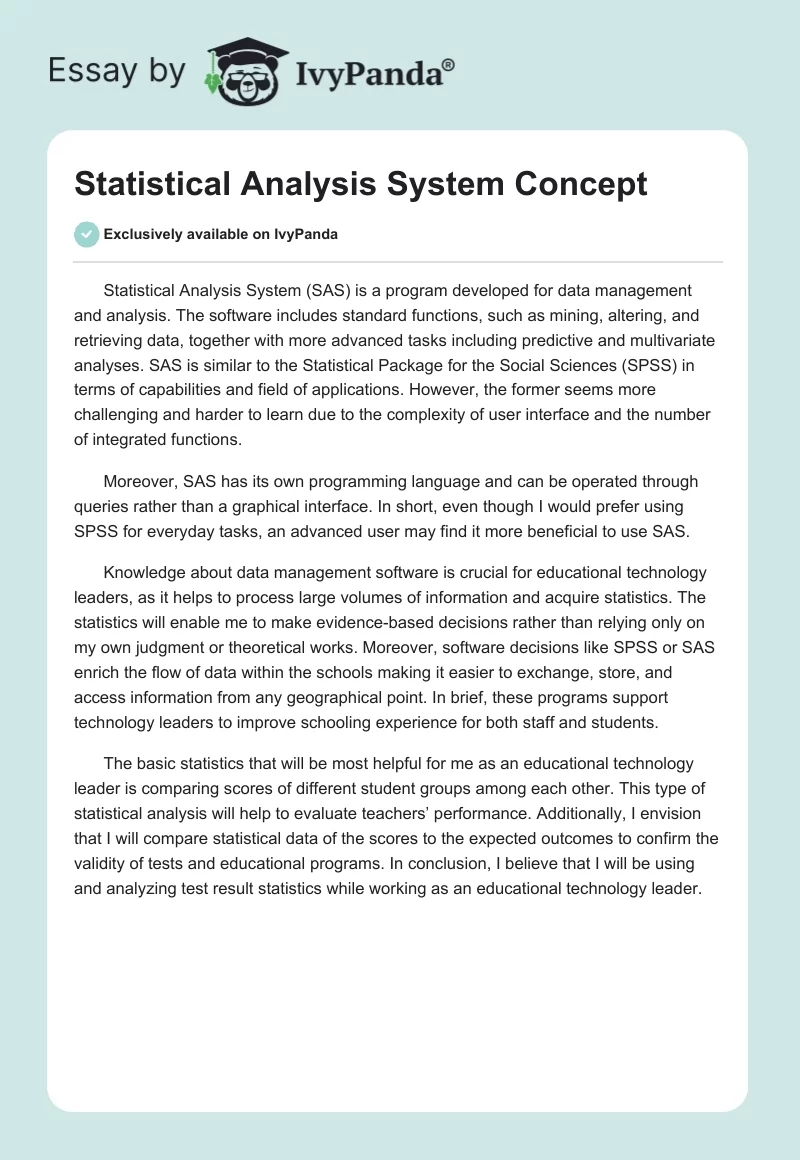Statistical Analysis System (SAS) is a program developed for data management and analysis. The software includes standard functions, such as mining, altering, and retrieving data, together with more advanced tasks including predictive and multivariate analyses. SAS is similar to the Statistical Package for the Social Sciences (SPSS) in terms of capabilities and field of applications. However, the former seems more challenging and harder to learn due to the complexity of user interface and the number of integrated functions.
Moreover, SAS has its own programming language and can be operated through queries rather than a graphical interface. In short, even though I would prefer using SPSS for everyday tasks, an advanced user may find it more beneficial to use SAS.
Knowledge about data management software is crucial for educational technology leaders, as it helps to process large volumes of information and acquire statistics. The statistics will enable me to make evidence-based decisions rather than relying only on my own judgment or theoretical works. Moreover, software decisions like SPSS or SAS enrich the flow of data within the schools making it easier to exchange, store, and access information from any geographical point. In brief, these programs support technology leaders to improve schooling experience for both staff and students.
The basic statistics that will be most helpful for me as an educational technology leader is comparing scores of different student groups among each other. This type of statistical analysis will help to evaluate teachers’ performance. Additionally, I envision that I will compare statistical data of the scores to the expected outcomes to confirm the validity of tests and educational programs. In conclusion, I believe that I will be using and analyzing test result statistics while working as an educational technology leader.

